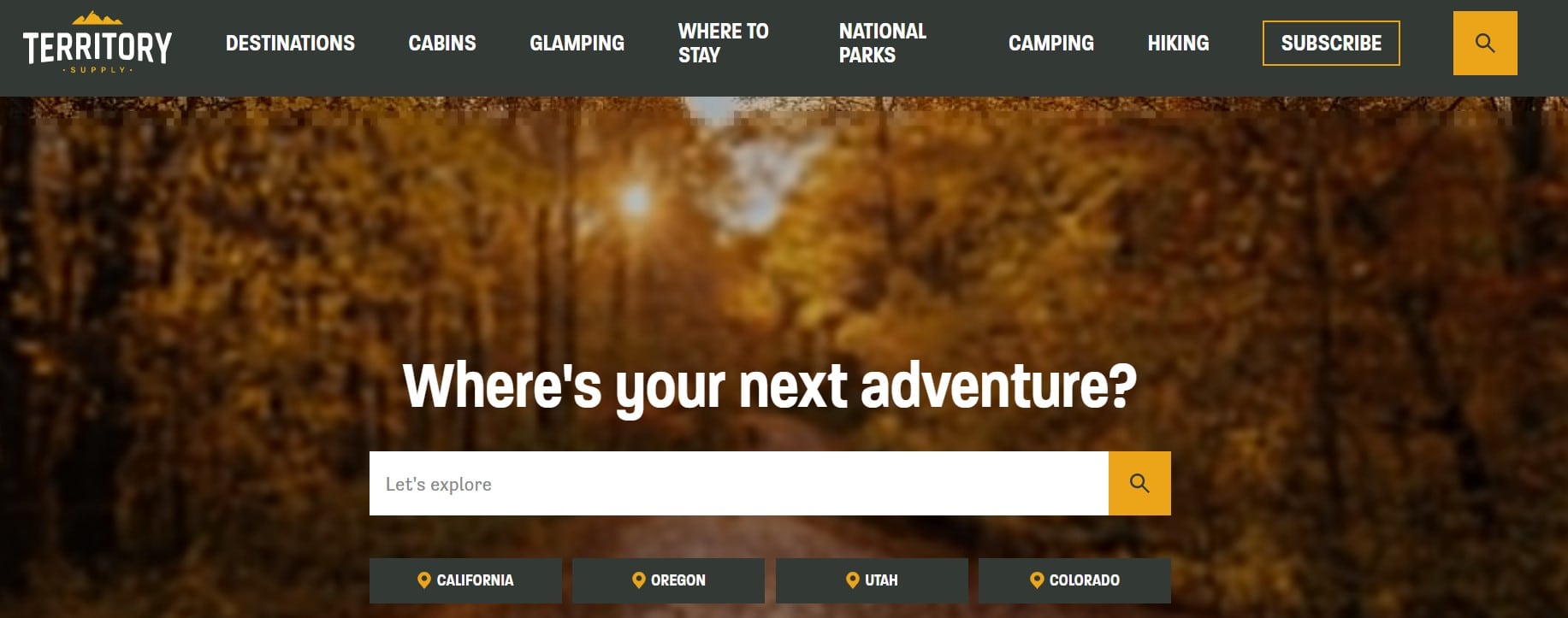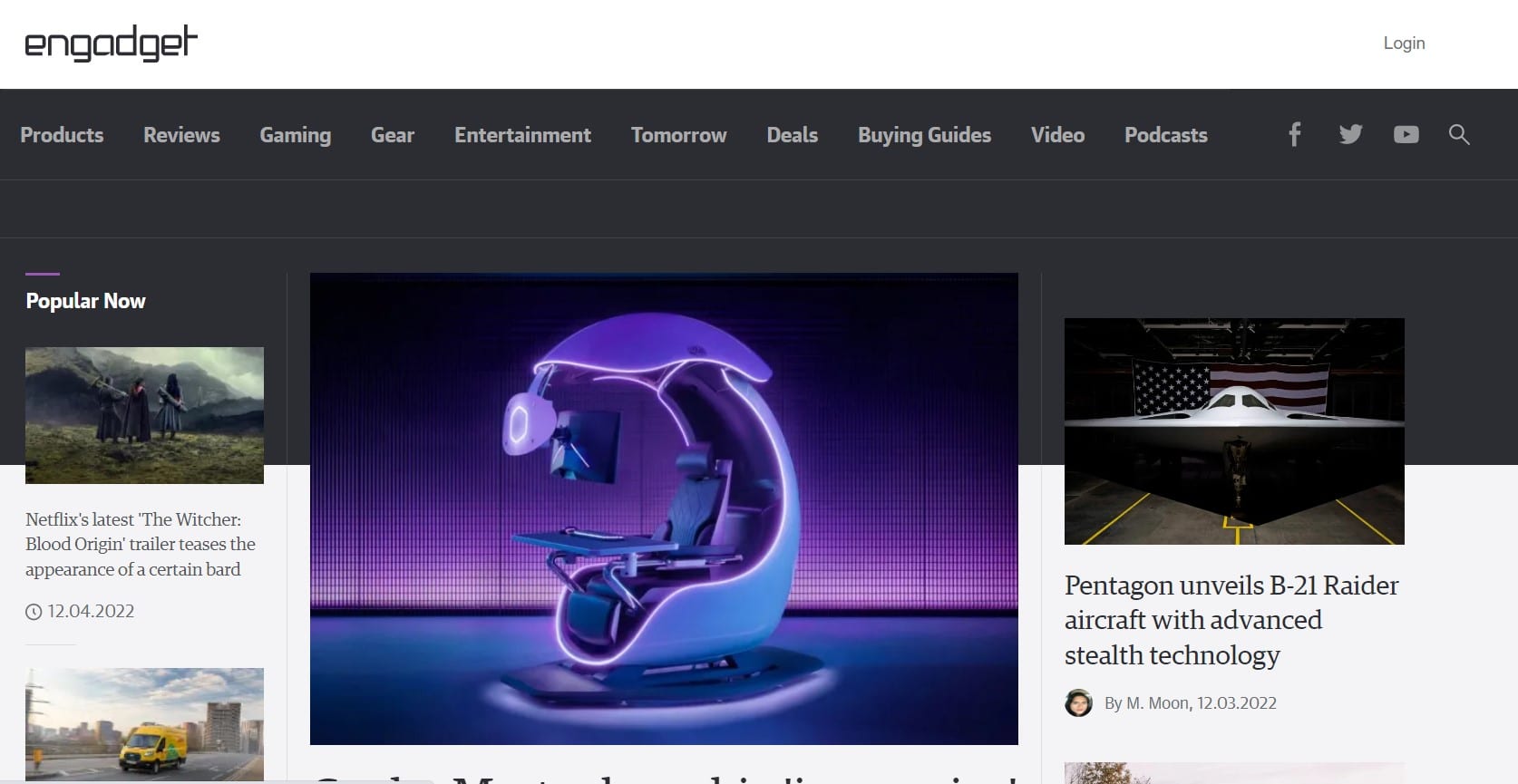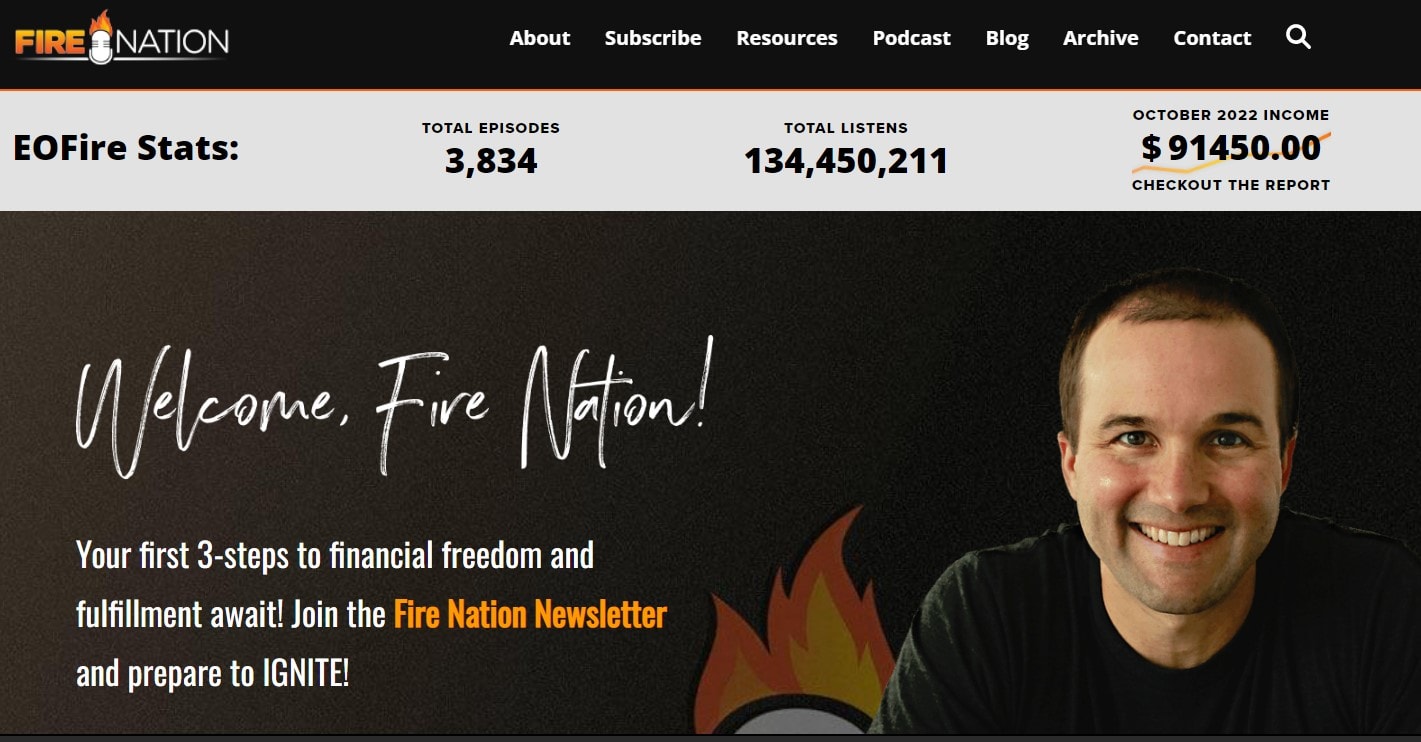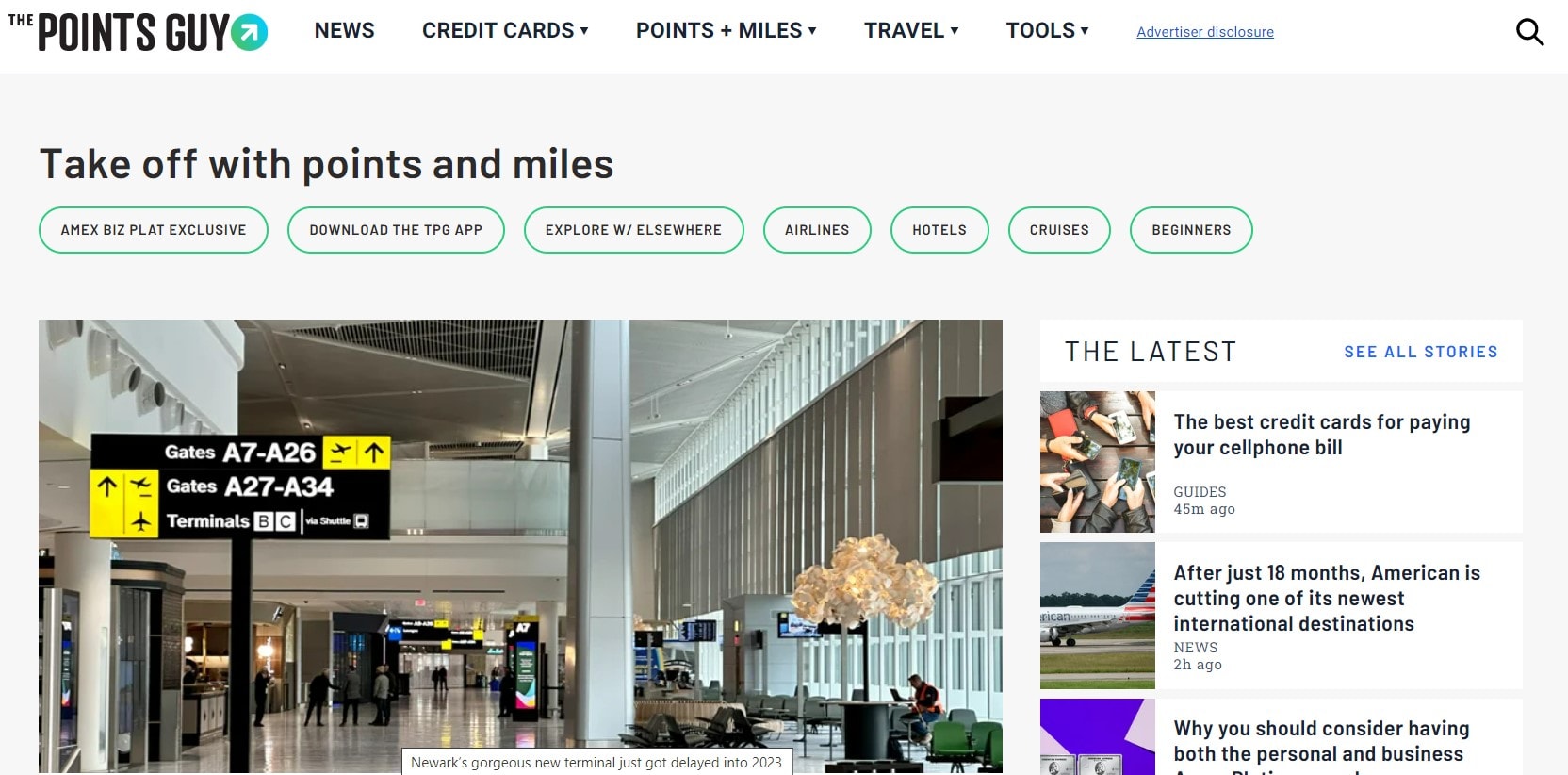Affiliate link disclosure examples are a great way to figure out how to write your own affiliate disclaimer.
If you want to make money with affiliate marketing, you also have to have them. They make sure you follow the law, the rules of search engines, and the rules of the sites that run the affiliate programs.
If you don’t have an affiliate disclosure, you could lose your affiliate accounts and, in rare cases, be fined.
This article shows 13 examples of affiliate disclosures from sites that make money through affiliate marketing.
Are you all set?
So let’s start by talking about what we already know.
What Is An Affiliate Link Disclaimer?
A disclaimer about affiliate links is a sentence that tells people you are an affiliate for certain brands, products, and services.
It tells people who read your content that the links on the page, website, or email will be affiliate links, and if they buy something using the link, you will get a cut of the fee from the product owner.
In other words, it’s a way to tell your readers the truth.
They can be short or long, but they must say that you are an affiliate and that the links are affiliate links.
Top 13 Affiliate Link Disclosure Examples
Affiliate links bring in money for the following websites.
Look at how they put them on display and, more importantly, how they write them.
1. Smartblogger.com
SmartBlogger.com tells you about its affiliates on its resource page. Also, they remind the reader that if they buy something through one of their links, they will get a commission.
At the end of the short disclosure, they link to the main disclosure page, which has more information and tips about the affiliate links they use.
Even though they don’t put this disclaimer on every page of their site, there is a link to their main affiliate disclaimer in the footer of every page.
This disclaimer tells the reader about affiliate links and, more importantly, tells them that any affiliate links on the website will have the words “Affiliate Link” written in brackets next to the link.
Anyone who clicks on the link will know for sure that it is an affiliate link.
2. Territorysupply.com
Territories Supply works with Amazon Associates as a partner. At the bottom of their website, there is a one-line disclaimer about affiliate links.
In the disclaimer, it says that the person is an Amazon Associate and that Amazon.com pays them a commission. At the end of the disclosure, there is a link that takes the reader to a page with links to their editorials and disclosures.
This page tells you about the affiliate links that are on the website.
In addition to the link in the footer, every post with an affiliate link also has a disclaimer at the top.
3. Engadget.com
Engadget is a huge website with a lot of reviews of products that can be bought online.
They put a notice about their affiliates at the top of every page with a product review, and their privacy policy also talks about the links to third-party sites.
This website’s disclaimer is short and gets to the point. The popular website makes it clear that they recommend all products and may get affiliate commissions if you buy something through them.
4. Smartpassiveincome.com
SPI’s websites use three different types of affiliate disclosures.
Some people might think this is too much, but I think the owner, Pat Flynn, is just making sure he doesn’t have any problems with the product owners or the FTC.
His “Tools” page has the first thing he says about himself.
The following disclaimer is from the main affiliate disclosure he links to in his footer. The image below shows a section about his affiliate relationship with Amazon Associates:
Finally, on every page where an affiliate link appears, he discloses the following:
Although this may seem excessive to some (maybe it is), SPI makes sure to cover every base to ensure that they don’t run into any issues.
5. Problogger.com
The owner of Problogger, Darren Rowse, puts disclaimers about his affiliate links on his “Resources” page and any page that has an affiliate link.
He doesn’t have a link in his footer, and as you can see in the picture above, his disclosure is just a one-sentence notice: Problogger seems to be happy to keep things simple with a short statement, and they don’t have a main affiliate disclaimer page.
6. Johnchow.com
John Chow is a well-known blogger who makes a lot of money through affiliate marketing.
Sponsored ads and a lot of reviews with affiliate links are on his blog.
The link to his affiliate disclosure is in the website’s footer, and when you read it, you’ll see that it’s not like most others.
What’s interesting (and different) is that he says the money he gets from product owners “may” affect the content of his blog. Most affiliates say the opposite.
Few people may raise their eyebrows when they first read it, but you can say that he’s being honest with his readers, which must be worth something if he’s making a small fortune, as some reports say.
7. Wirecutter.com
If you’re worried about where and how to put your affiliate disclosures, you might want to look at what the big sites are doing and do the same thing.
I mean, they have enough money to check with lawyers and experts, so what they do is probably fine.
The Wirecutter, a popular site owned by the New York Times, is one of the most important websites.
They put a sentence about their affiliate links at the top of each page, which seems to work well for them.
8. Fancycrave.com
In the footer of Fancy Crave, there is a link to their disclosure page, which tells people that they are affiliates for certain merchants and products.
By mentioning the FTC and telling the reader to do research before buying anything online, they make the disclaimer seem more trustworthy.
In the last sentence, they say that they only suggest products they think will help their readers.
9. Eofire.com
Another well-known blog with an affiliate disclosure link in the footer is EO Fire.
His disclosure tells the reader that he is an affiliate for some of the products he talks about on his website and that if you buy through the link, he will make money.
I like this disclaimer because he tells you to assume that all the links on his blog are affiliate links and gives you a link to email him if you have any questions about the disclaimer.
10. Thepointsguy.com
The Points Guy’s website has two more disclaimers that he uses.
His first disclosure (shown above) is in the blog’s footer and says that he gets paid for the links on the pages.
The second disclaimer is like the first one and can be seen on every page.
For the disclaimers on the website, different fonts and sizes are used, and they are placed in areas where the reader will not miss them.
11. Nerdwallet.com
Another popular website that tells you about its affiliates at the top of every page is Nerd Wallet.
They say that how they write and where they put content may be affected by how much money they get. But they also say that no amount of money will ever change their opinions and ratings.
I like this disclosure because it builds trust and lets readers know that the reviews are the authors’ honest opinions, no matter how much money they get from the company.
12. Websitebuilderexpert.com
Website Builder Expert site has a link at the top of each page that says “affiliate disclosure.” It’s a short sentence that links to the website’s advertising disclaimer, where there’s more information about the affiliate links that are used.
I put this disclaimer on the page because it’s important to know that your disclosure links should be easy to find.
The FTC makes this pretty clear.
This website has a disclaimer. The words are fine, but the font and color of the text make it easy to miss.
I mean, I’m not a lawyer, and they probably won’t get in trouble, but if you’re going to put a disclosure on the page, you might want to make it stand out a bit. Otherwise, what’s the point?
13. Makingsenseofcents.com
Another well-known blog with two different affiliate disclosures is Making Sense Of Cents.
As you can see above, the first piece of information comes from her earnings disclaimer, which is linked to in her footer.
The second disclaimer is at the bottom of all pages with affiliate links.
Affiliate disclosures that tell the reader that any commissions they get don’t cost them anything extra are much better than those that don’t say that.
She says this in both of her disclosures about affiliates.
Affiliate Links Must Be Disclaimed In Emails?
The FTC’s rules about affiliate links and paid content apply to all forms of media, including email.
The Federal Trade Commission (FTC) says that if you send an email with an affiliate link in it, you should put an affiliate disclosure in the email before the affiliate link. To put it another way, it should be near the top of the email.
Again, I’m not a lawyer, but if the email linked to an article on your blog that had an affiliate link, but the affiliate link wasn’t in the email, you wouldn’t need to add a disclosure to the email.
Because: You’ll have a clear warning on the article. The email doesn’t have any links to the affiliate product.
Are YouTubers required to disclose affiliate links?
Yes, but a lot of people either don’t or do it wrong.
The problem with video is that you should put the affiliate disclosure in three places if you want to avoid problems.
I agree, it’s a pain.
First, put the disclosure in the video’s description. Then, put it in the audio, and finally, as a card or annotation in the video itself.
The three spots are there so that people who watch the video don’t miss anything. For example, people who have trouble hearing may only listen to the audio, and people who have trouble seeing may only watch the video.
People can also embed YouTube videos on their websites without the description. This is why the cards and annotations are needed to show the disclosure.
How To Add A Disclosure On Twitter?
Even though Twitter only lets you use 240 characters, you should still tell people that the links are affiliate links.
Even when the limit was only 140 characters, you still had to say that any links were affiliate links. This was true even on social media sites.
The best way to post sponsored links on Twitter, in my opinion, is to show the following before the tweet:
#Sponsored Ad
#Affiliate Link
#Ad
#Influencer
Posting affiliate link disclosures on Twitter is still a bit of a gray area, so proceed with caution.
FAQs
💁♀️Where should I place my affiliate link disclosures?
Affiliate link disclosures should be placed clearly and conspicuously near the affiliate links themselves or at the beginning of the content that contains them. The goal is to ensure that viewers see the disclosure before clicking on any affiliate link.
✔What should an affiliate link disclosure say?
An effective affiliate link disclosure should be straightforward and easy to understand. It should inform the reader that you may receive a commission for recommendations or links to any products or services.
🤷♀️Do I need to disclose every single affiliate link?
Yes, it's best practice to disclose every affiliate link. This approach ensures compliance with regulations and maintains transparency with your audience across all content.
❓How does affiliate link disclosure affect my content's credibility?
Properly disclosing affiliate links can actually enhance your content's credibility. It shows that you are upfront and honest with your audience, which can strengthen their trust in your recommendations.
👀Do affiliate link disclosure requirements vary by country?
Yes, disclosure requirements can vary by country. It's important to be familiar with the regulations governing affiliate marketing and disclosures in the countries where your audience is located.
Quick Links:
- Top Investing Affiliate Programs To Add To Your Portfolio
- Best AffiliateWP Black Friday & Cyber Monday Deal
- Is Affiliate Lab Good For Beginners? Does Affiliate Lab Teach You how To Find A Great Niche?
- Everad Affiliate Network Review: What Is Everad?
Conclusion: Affiliate Link Disclosure Examples
In this article, I showed you some of the best examples of affiliate link disclosures so that you can make your own.
Which one did you like best? How will you use this article to make your blog better? Tell us what you think by leaving a comment below.
Also, if you want us to add more things to this list, please leave them in the comments section below.













